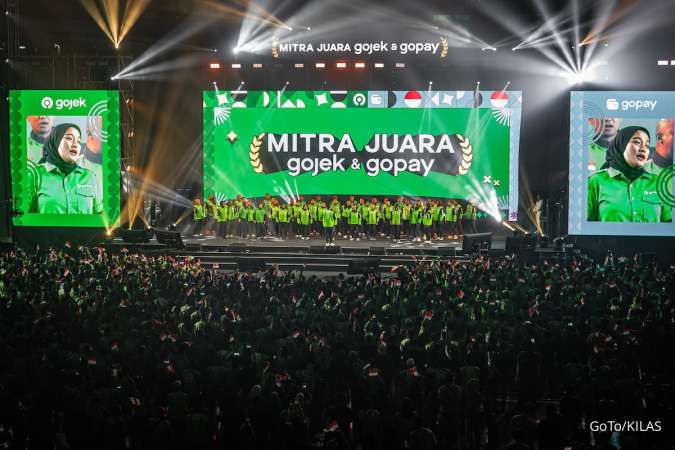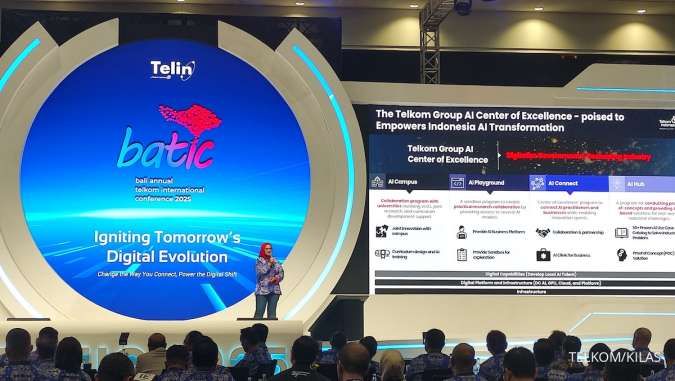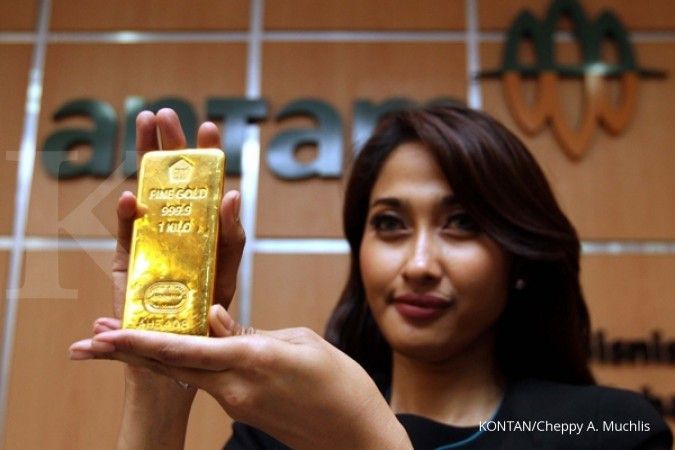JAKARTA. State-run diversified miner Aneka Tambang (Antam) wrapped up 2014 with sliding sales due to the government’s ore-exports ban and weak commodity prices, despite significant growth in the company’s ferronickel business. Antam’s unaudited sales plunged 16 percent in 2014 to Rp 9.46 trillion (US$741.67 million) compared to the Rp 11.29 trillion generated in 2013. “[The declining sales] are in line with the plunging prices of gold and nickel as our main products, as well as the government’s policy to restrict raw mineral ore exports,” the company said in a statement over the weekend. Spot gold fell 1.4 percent last year after a 28 percent drop in 2013 as a surge in equities and an improving US economy prompted some investors to shift away from the metal, according to a Bloomberg report. Antam saw its gold sales rise by just 5 percent by volume and 6 percent by value to 9.88 tons and Rp 4.93 trillion, respectively. Meanwhile, the government’s ore-exports ban, effective early last year as a follow up to the 2009 Mining Law, triggered a significant drop in nickel sales, one of the company’s largest sources of revenue. Antam’s nickel sales plummeted 98 percent to Rp 89 billion last year from Rp 4.08 trillion in the previous year, while production slumped by around 90 percent to 1.14 million wet metric tons. The export restriction is mirrored in the company’s 2014 net sales, with the contribution of gold and ferronickel to total exports up significantly as a result of declining nickel sales. Gold accounted for 52 percent of the company’s top line, with ferronickel following at 42 percent. The figure stands in sharp contrast to 2013, when gold contributed some 42 percent to the company’s total sales, followed by nickel ore at 36 percent and ferronickel at 18 percent. Following the raw ore-exports ban, the company’s annual ferronickel sales volume increased by about 37 percent to 19,748 nickel tons in ferronickel (TNi), while its ferronickel income grew by around 93 percent, from Rp 2.7 trillion to Rp 4 trillion this year. Meanwhile, in the coal sector, major coal producer Adaro Energy ended 2014 with production rising by around 8 percent to 56.21 million tons. Adaro expects that this year’s level will be similar to last year’s level or up by 3 percent to 58 million tons, according to the company’s quarterly report. Adaro sold about 57.02 million tons of coal last year, up by about 7 percent from the 53.47 million tons produced the previous year. “[...] We continued to see good demand for our coal, particularly from Indonesia and India,” the report read. Domestic sales made up 22 percent of the company’s total sales, followed by markets in India at 15 percent, Japan at 12 percent, China at 10 percent and Korea at 9 percent. Adaro aims to invest $75 million to $125 million in capital expenditure this year and to book earnings prior to deductions for interest, tax, depreciation, and amortization of between $550 million and $850 million. “Our focus in 2015 is to continue to look for ways to reduce cost, maintain the reliability of supply to our customers, and improve efficiency and productivity in each part of our supply chain,” the company said. (Anggi M. Lubis)
Antam’s sales plunge on lower prices
JAKARTA. State-run diversified miner Aneka Tambang (Antam) wrapped up 2014 with sliding sales due to the government’s ore-exports ban and weak commodity prices, despite significant growth in the company’s ferronickel business. Antam’s unaudited sales plunged 16 percent in 2014 to Rp 9.46 trillion (US$741.67 million) compared to the Rp 11.29 trillion generated in 2013. “[The declining sales] are in line with the plunging prices of gold and nickel as our main products, as well as the government’s policy to restrict raw mineral ore exports,” the company said in a statement over the weekend. Spot gold fell 1.4 percent last year after a 28 percent drop in 2013 as a surge in equities and an improving US economy prompted some investors to shift away from the metal, according to a Bloomberg report. Antam saw its gold sales rise by just 5 percent by volume and 6 percent by value to 9.88 tons and Rp 4.93 trillion, respectively. Meanwhile, the government’s ore-exports ban, effective early last year as a follow up to the 2009 Mining Law, triggered a significant drop in nickel sales, one of the company’s largest sources of revenue. Antam’s nickel sales plummeted 98 percent to Rp 89 billion last year from Rp 4.08 trillion in the previous year, while production slumped by around 90 percent to 1.14 million wet metric tons. The export restriction is mirrored in the company’s 2014 net sales, with the contribution of gold and ferronickel to total exports up significantly as a result of declining nickel sales. Gold accounted for 52 percent of the company’s top line, with ferronickel following at 42 percent. The figure stands in sharp contrast to 2013, when gold contributed some 42 percent to the company’s total sales, followed by nickel ore at 36 percent and ferronickel at 18 percent. Following the raw ore-exports ban, the company’s annual ferronickel sales volume increased by about 37 percent to 19,748 nickel tons in ferronickel (TNi), while its ferronickel income grew by around 93 percent, from Rp 2.7 trillion to Rp 4 trillion this year. Meanwhile, in the coal sector, major coal producer Adaro Energy ended 2014 with production rising by around 8 percent to 56.21 million tons. Adaro expects that this year’s level will be similar to last year’s level or up by 3 percent to 58 million tons, according to the company’s quarterly report. Adaro sold about 57.02 million tons of coal last year, up by about 7 percent from the 53.47 million tons produced the previous year. “[...] We continued to see good demand for our coal, particularly from Indonesia and India,” the report read. Domestic sales made up 22 percent of the company’s total sales, followed by markets in India at 15 percent, Japan at 12 percent, China at 10 percent and Korea at 9 percent. Adaro aims to invest $75 million to $125 million in capital expenditure this year and to book earnings prior to deductions for interest, tax, depreciation, and amortization of between $550 million and $850 million. “Our focus in 2015 is to continue to look for ways to reduce cost, maintain the reliability of supply to our customers, and improve efficiency and productivity in each part of our supply chain,” the company said. (Anggi M. Lubis)



